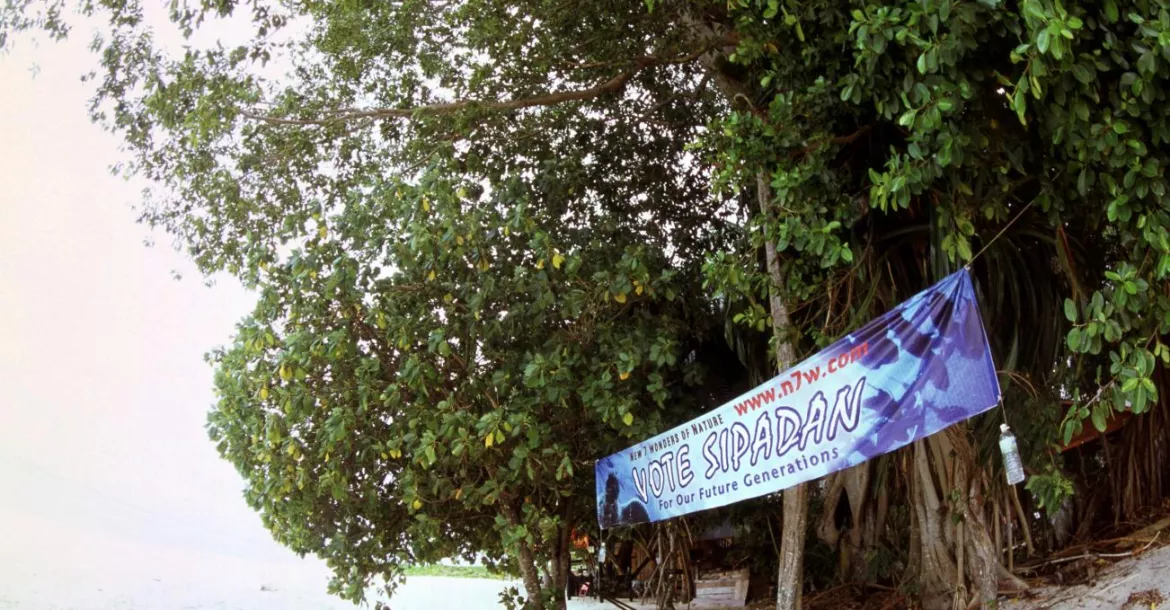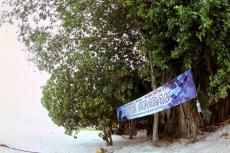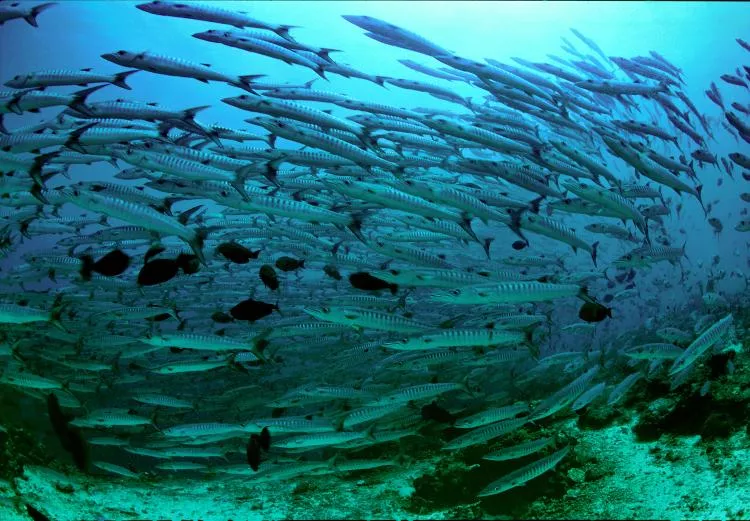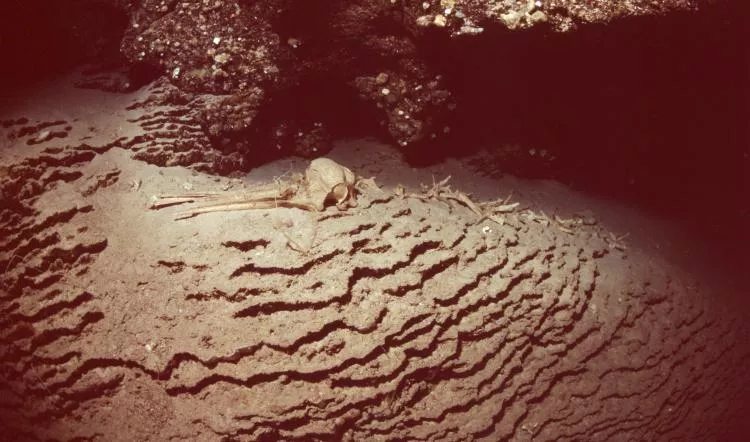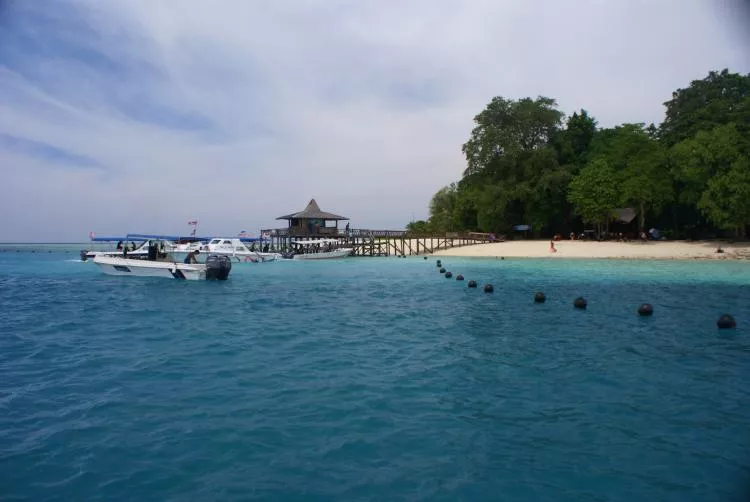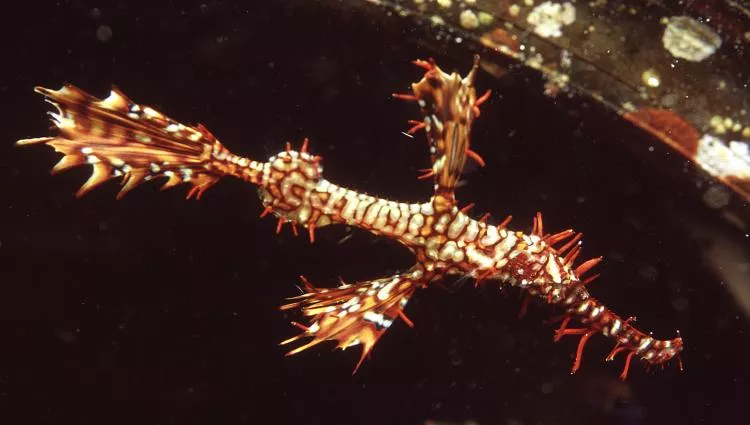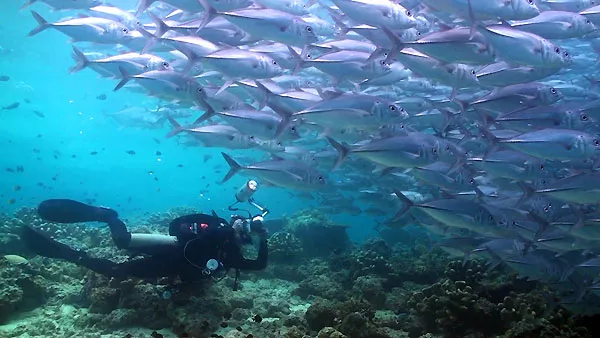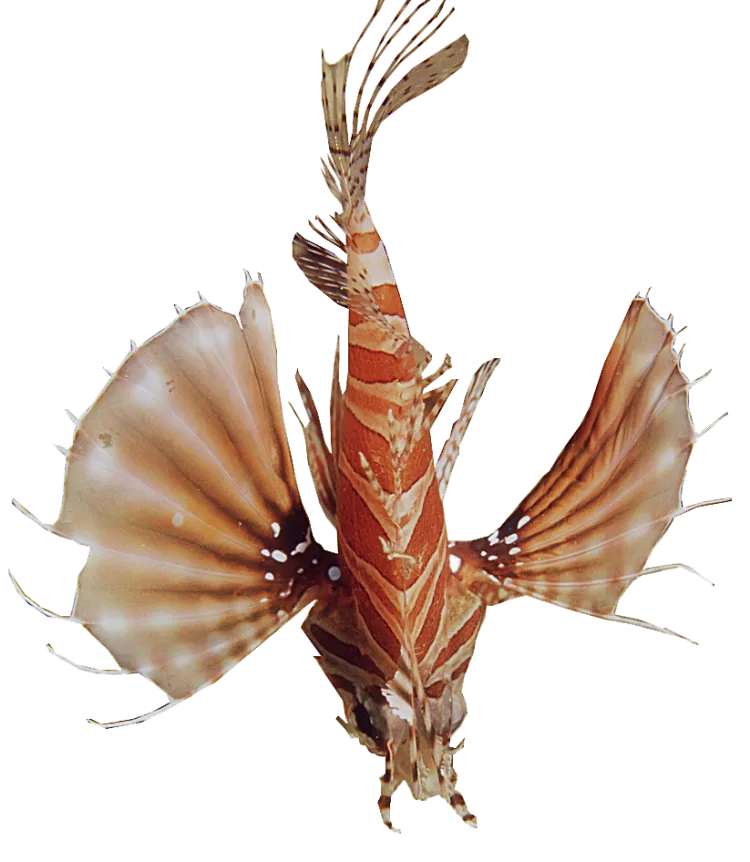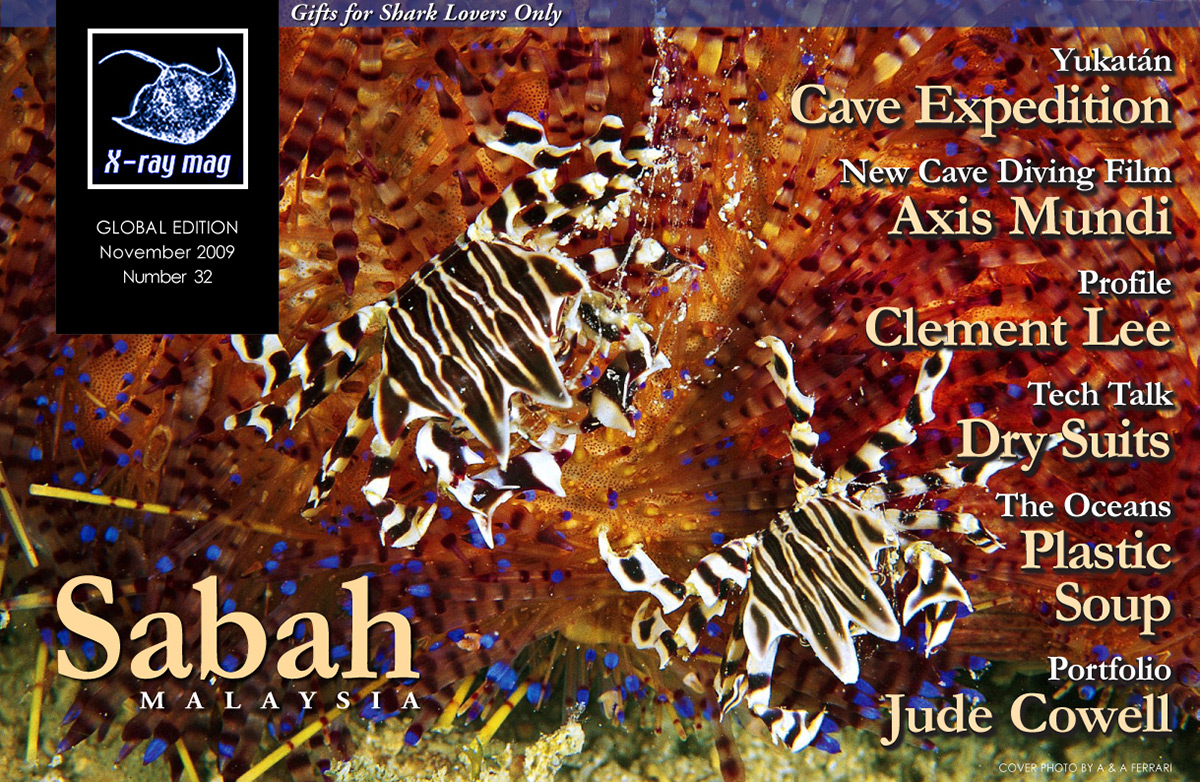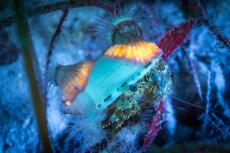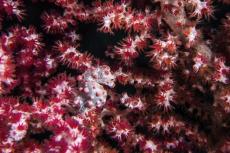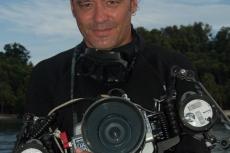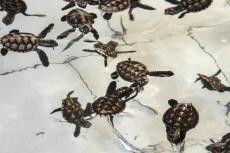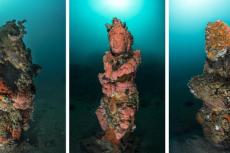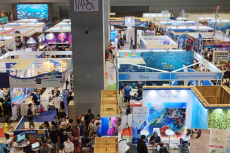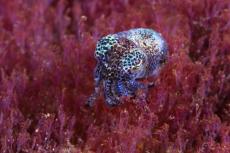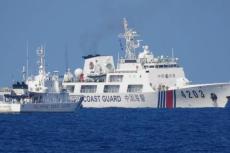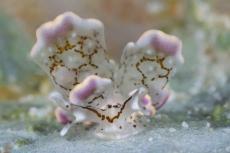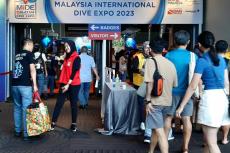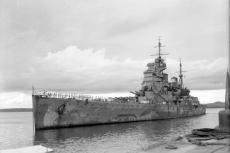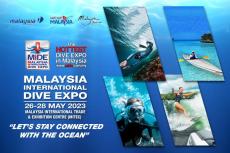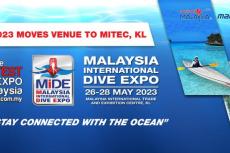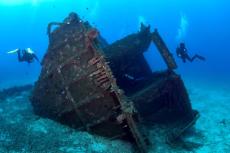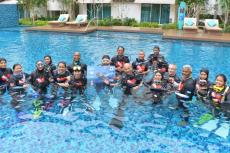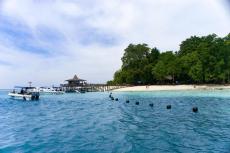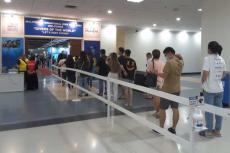I have always been both somewhat envious and intrigued by what Sabah, Malaysian’s easternmost state, has to offer the travelling visitor.
Contributed by
Upon arrival, the provincial tranquillity and smaller scale of things in Sabah instills a sense of coming to a safe and calm place, which seems to go about matters in its own time and direction, unperturbed by unrest elsewhere on the globe. And Sabah has indeed come a long way in a short period of time, if the few glimpses these undersigned passers-by get from a airport transfers, hotel stays and excursions is anything to go by.
This time, we arrived at a new airport in Tawau—arriving at the old airport did feel like touching down on a couple of tennis courts—and the roads here are now in a much better state. Modern suburban residential complexes are gradually replacing the ramshackle shantytown of many areas we passed by. Malaysia is only 52 years old as a nation, but the determination with which they build their society never ceases to impress me, and returning here after so many years made the many changes stand out... but were they all for the better?
We were greeted in Tawau airport by Clement Lee, CEO of Borneo Divers and chairman of Sabah Tourism. After exchanging courtesies and the ritual “did you have a nice flight?” we soon drifted into a discussion about the development the region has been undergoing since Lee came to start his dive operations 25 years ago.
During most of our 50-minute transfer to Sandakan, we drove by seemingly endless stretches of oil palm plantations, which seem to have pushed the rainforest back into the distant horizon. Sandakan, once a sleepy fishing village and our point of departure for the boat transfer to Mabul, now seems like a bustling town.
As we enjoyed a smooth ride in a high speed boat skimming across the surface of the sea, I couldn’t help pondering how life must be like living in some of the rickety huts on stilts we passed—which have no fresh water or sanitation, let alone electricity—sitting way out there on the horizon in the middle of what seemed to be the open ocean, but must have been built on extensive mud flats and sandbars.
Diving
The range of options on offer within a short radius from Mabul Island is second to none. Sipadan Island, considered by many to be the best dive site on the planet, is but a short boat transfer away to the south. Mabul itself is one of the birthplaces of muck-diving, and with Kapalai nearby, there’s also unparalleled macro-diving. Plus, close to the mainland, you can dive in the mangroves.
But even with this diversity, it is probably safe to say that Sipadan remains the coveted star attraction, which pulls visitors from far and wide.
As such, the island has been and remains the centre of much controversy. It was the center of a lengthy battle between Indonesia and Malaysia, who vied for sovereignty over the island at the international court in Hague, which only in 2002, ruled in favour of Malaysia.
As the island’s ecosystem is fragile, the many concerns over the impact of tourism later led to clearing the island of the resort facilities there. Tight regulations were imposed on the number of permitted day visitors, the management of which still remains a very contentious issue between the operators who are all vying for a number of guest permits that is woefully short of the growing demand.
What I have seen over the years there leaves no doubt in my mind that these measures were necessary. Sipadan seems to be in a much better state now than it was in my previous visit.
Every day we saw massive schools of barracudas, trevallies and even humphead parrotfish. There were always many small sharks—predominantly the ubiquitous white tip sharks— patrolling the reefs or napping on the sandy patches. Looking around, umpteen turtles were all over the place. As a diver peers up from the sea floor, on can see the turtles as silhouettes against the water’s surface gliding gracefully along the reefs like soaring birds in the sky eclipsing the sun, or plainly snoozing in some crevice on the reef like hung-over teenagers on Sunday morning, totally unaffected by all the wheezing, bubbling visitors closing in to take snapshots with their underwater cameras.
There are about 13 dive sites around Sipadan. When the ocean is calm, it takes about 20 minutes to get from Mabul to Sipadan. Most of the diving in Sipadan is a combination of wall and drift diving. The visibility was never really great during the week we spent there—partly due to a couple of days of choppy seas that stirred up particles—but because there was always so much to see, we never really noticed, or least, it never became a concern.
As the day guest permit system worked during our visit, the defining measure of the permit was ‘a day’ not the number of dives permitted. Consequently, the excursions to Sipadan were conducted as full day outings with four dives and a lunch break in the middle.
At times, I felt that this regime was a little too rigorous, as the forth dive in a day often was of limited quality and use, among other things, since one had been building up nitrogen over the day, and so, there were decompression issues to consider. But hey, it’s a bit like complaining about being fed too much caviar and champagne. Sipadan is one of those blessed places where you seemingly can’t have a bad time even if you try.
Here, disappointment is if you only see a small school of fish and a couple of sea turtles.
Because of its relatively small size and it having dive sites all the way around its perimeter, it is always possible to find a sheltered spot on the leeward side on a windy day. One of my personal favourites remains Barracuda Point. I know, it has been covered ad nauseam in so many publications before—including this one—but it is not without merit. Here, you always seem to be able to find a huge school of circling barracudas or trevallies, which, if you move carefully, can end up completely encircling you. I get such of kick out of this—flying in formation inside a huge school of fish as if I am one of them. It always ends too soon, and like a five-year-old in an amusement park, I am always left wanting more when time is up.
Between dives, the boat goes back to the jetty, and we have a snack at the gazebo, which is built on the island. It is also here we have lunch after the second dive. The authorities have also built a proper toilet facility on the island. Fresh water is supplied by boat every day and pumped ashore—a reassuring sign that the facilities aren’t drawing on the small aquifer under the island.
Aside from the area around jetty, the gazebo and the toilet facilities, the rest of the island is now off limits for visitors, though there is a residing contingent of soldiers and park rangers overseeing and enforcing the protection measures, including keeping fishermen and poachers off the island.
Permit controversy
As this issue goes to press, the current system of day permits allows for 120 day visitors—no overnight stays are allowed anymore. With about 15 resorts each accommodating some 30-100 guests, many of which have come here to dive Sipadan in particular, it doesn’t take a rocket scientist to figure out that demand for day trips to Sipadan may outstrip supply by up to a factor of five to ten. During peak periods, vacationers who may come from afar could, in a worse case scenario, end up finding themselves going to Sipadan only once.
Curbing the number of visitors to Sipadan has been essential to protect the fragile island from being unsustainably exploited— let there be no doubt about that—but the way the permit system is currently set up leaves room for further improvement. What springs to mind is whether each granted visitor really needs or want to go there for the full day and have four dives each, as the fourth consecutive dive often ends up being so and so, if you are not the type who’s itching for having yet another dive logged in the book. Why not make it 2 x 240 half day permits, so twice as many may have a chance of going? The load on the island will be the same, or even less, as half day visitors will probably not have their lunch there.
In any case, when booking a trip to the area, pay close attention to the regulations and advice given on the various home pages and ask how many dives to Sipadan can be pre-booked or guaranteed.
There is also an interesting but almost perverse twist to the arrangement as well: many of the resorts are allotted the same number of day permits, just 14. So if you go for the big upscale resort accommodating up to 100 guests, which may be well booked, you could end up having far worse odds of going to Sipadan than if you stay with the small economy-range resort, which can accommodate only 25 guests.
Diving Mabul
There are about 17 dive sites off Mabul and about 13 dive sites off Kapalai. Most of the dive sites can be reached from any of the resorts in less than 15 minutes by dive boat. Most of the diving off Mabul and Kapalai is quite shallow with depths usually ranging from 5 to 20 meters (15 to 60 feet).
These places are macro heaven on earth. In fact, most of the house reefs are excellent, so you can often pretty much just base yourself at the resort’s dive station all day long and dive at your leisure. Once upon a time, while staying at Sipadan Water Village, I spotted my very first ghost pipefish right under their jetty.
Diving right off Borneo Diver’s jetty also produced one great encounter after another. On our first dive, we came across schools of small barracudas, trumpetfish, several snoozing turtles, shrimp gobies, a couple of harlequin shrimp, different nudibranchs, a paper frogfish, an octopus, a crocodile fish and plenty of groupers. That was quite a parade.
Around these parts there is rarely a need to move far and most likely you will find yourself covering an area no bigger than the size of a tennis court during a typical dive. Most of your time will probably be spent kneeling on a patch of sand in front of a coral block observing the myriad of small and big sea life going about their daily business.
The reef slopes down at about 45 degrees just off the jetty before it levels off into the sandy plateau surrounding the island at around 18m. The southern side of Mabul is fringed by a large sandy plateau, and the dive sites here are only reached by a short boat ride.
Diving Kapalai
It is not really an island but a sandbar. If not for the resort balancing on its stilts on top of the shoal, one wouldn’t know it was there except during low tide. Like Mabul, this location is full of small critters: nudibranchs, gobies, crabs and what not. A once resident biologist explained that these islands, which offers sheltered shallow bays, act as nurseries for a wide range of species.
There’s mostly sandy bottom, or coarse coral gravel, with only few coral heads. At first sight, it comes across very unassuming—that is, until you catch a glimpse of your first blue ringed octopus, frogfish or ghost pipefish.
Kapalai is a little bit further away from Sipadan than Mabul, but still within easy reach and the muck dive sites around the resort are excellent. A number of artificial reefs have been established around the sand banks of Kapalai including a few shipwrecks and what seems to be an old communications tower.
The reefs around Kapalai are generally very shallow, but there is some excellent diving, especially if you are into hunting for the more elusive critters; Yawfish with eggs in their mouths, spearing mantis shrimps, big cuttlefish and some excellent nudibranch action.
At Mandarin Valley towards the end of the day, mandarinfish can be seen performing their mating dances just below the water’s surface. Unfortunately, the Flamboyant Cuttlefish did not want to show itself to me, which just means there has to be a revisit of this area in the not too distant future.
Development of Mabul
Revisiting the island, it was clear that the place has undergone a marked development with the resorts now having a bigger presence. They now dominate the outline of the island. As in so many other places, progress can be both good and bad.
From a tourist’s viewpoint, we felt that the addition of several other resorts, which protrude out from the island, has caused the place to lose a bit of its magic and its sense of luxurious remoteness, which was part of the island’s ambience before. And in this regard, whomever is the responsible authority overseeing the local development should fare very cautiously in regards to permitting further construction on the island. The island is still a paradise to visit but with more visitors it would become too busy—who wants to travel half way around the world to have a view of other tourists? This was a sentiment that was also reflected by several of the operators and staff we spoke to during our stay.
Being the investigative journalists that we are, we also wanted to know what effect tourism had on the local community and how the villagers took the presence of the resorts and all the guests on the island. Many stated that the number of new jobs in the hospitality and construction sectors provided them with good livelihoods. As it turned out, many of the resort staff were recruited from the island. Walking around on the island, the locals seemed very friendly and welcoming, with a lot of goofy kids happily posing for photographs.
Accommodation
Here are descriptions of six of the 11 resorts found on Mabul Island.
Borneo Divers
The resort sits on the island itself in contrast to some of the other nearby resorts that are constructed as water villages with bungalows on stilts over the water. With 30 bungalows, which are now all deluxe and arranged around a garden with a pool, the resort is very comfortable and luxurious in a low-profile manner, much like a discrete limousine. It is an all-inclusive resort, which means that all meals and diving is included. Alcohol and indulgences, such as the awesome massages we got addicted to, are extras. Meals are served buffet style with cuisine including both Eastern and Western fare, so each meal satisfies most pallets.
The diving station sits at the end of the jetty, and from here, there is direct access to a splendid house reef. There is also a little coffee bar, so one can easily spend all day just hanging out on the pier. There is also a room for photographers with tables and recharging stations. For boat dives, you sign up on the planning board, after which the staff will bring your kit to the boat and mount your kit on a tank.
Sipadan Water Village (SWV)
SWV was the first water village resort on the island. Guests reside in comfortable chalets with patios that not only overlook the open ocean, but also sit right on the reef table, so you can look right down at fish and what not. It has a special feeling. As some of the chalets face towards the island, ask if any of the oceanside bungalows are available. That is, if you’re the type who likes daydreaming while gazing out oat the open ocean.
The resort has now grown to 45 chalets built in the local style. The chalets have large slide doors that open onto a spacious outside deck. Meals served in buffet style featuring a mixture of local and continental cuisine are served thee times a day in an open air restaurant with a seating capacity of 150 people at one time.
The dive centre opens from 7:00 am onwards and is equipped with lockers, showers, toilet and a common area for resting between dives with complimentary snacks, hot coffee and tea. And from this year onwards, you can also go kayaking in transparent rental kayaks.
Kapalai
Kapalai is probably the most luxurious of the available accommodation options we have visited around Sipadan. Once a vegetated tropical island, Kapalai is now no more than a sand bar with a resort built on top. So, if you like to feel the sand beneath your feet when staying on a remote tropical island, this might not be for you. However, the resort features luxurious rooms with fantastic views over clean blue water, and for most people, staying in a water resort is a very special and exciting experience. Of course, one of the additional advantages of a resort in the middle of the ocean is that it is safe from mosquitos, and you can leave your doors and windows wide open.
Seaventures
If money is tight, you might consider Seaventures—a small former drilling platform that now sits on stilts off the northern coastline of Mabul. The industrial construction is a bit of an eyesore, which one tries not to notice when enjoying the otherwise pristine view from Mabul over Borneo.
Going over there was an intriguing experience through. For one, the elevator that takes one up to the main platform is also used to lower divers all the way down until they are chest-high in the water. We were having drinks on the platform when two divers went for a night dive under the platform and just took the lift down into pitch darkness and disappeared.
The platform is spacious and has plenty of rooms for various activities. The cabins are… well, cabins, and not really hotel rooms, which makes you feel like you are overnighting on a moored vessel—a feeling enhanced by the fuel smells, one usually finds on ships and ferries, wafting through the corridors.
It definitely came across as a place predominantly for the younger (and probably less affluent) crowd who prefer to pay less for a fun and festive, unconventional time, rather than spend lots of money on upscale décor. There was a party and lots of laughter going on the deck. Then, as a surprise, the house rock band of dive masters set up their gear to play.
Admittedly, my first and spontaneous thought was, “Uh oh, this is going to be painful,” but I was soon forced to eat my own words. They were really good, and I thoroughly enjoyed their performance of skillfully improvised classic rock ballads and lyrical classics. The various vocalists had good voices, the drummer was an artist with his sticks, and the guitarist could jam like there was no tomorrow. In fact, I wasn’t ready to go, when our boat came to take us back to our residence on Mabul. I had a great evening, but the accommodation was not really to my liking.
Under the platform is an artificial reef, which is now one of listed dive sites around Mabul. Part of it is really just some old junk upon which a lot of marine life has taken up residence, but various other constructed structures have been added to create a little park under and around the platform.
Sipadan-Mabul Resort (SMART) & The Mabul Water Bungalows
These resorts are really two complexes under the same management. There is the old complex, SMART, which sits under the shady palms on the southern side of the island overlooking a wide sandy beach, and the new and upscale Mabul Water Bungalows complex, which sits out on the reef opposite and adjacent to SWV.
The two complexes are interconnected by a winding pathway upon which an electrical vehicle (like a golf cart) offers transports for stroll-weary Westerners.
The interiors of the 14 bungalows of The Mabul Water Bungalows—each of which comes with private bathroom-hot/cold shower and toilet, spacious private balcony offering panoramic vistas of blue sea, colour TV with satellite channels, and mini bar—are luxurious and opulent. The resort also has an elegant upscale spa. There is an inhouse photo facility, and the large and airy restaurant for dining looks directly out over the reef ledge. As with the other resorts of Mabul, there is an excellent house reef right in front of the complex.
The SMART resort consists of 45 wooden duplex chalets with each room featuring two oversized single beds, a couch, shelves, ceiling fan and air-conditioning, a private en-suite offering free-flowing hot and cold fresh water and a front patio. The SMART resort is clearly more economical than The Mabul Water Bungalows—which is reflected in their respective rates. SMART is more middle of the road. It doesn’t provide quite the same level of luxury, but it is cool and comfortable. In addition, SMART also offers technical diving with basic nitrox mixes up to 40 percent, as well as advanced decompression and rebreather mixes up to 100 percent oxygen.
The future
Essential steps have been taken to protect Sipadan—which clearly looks a bit better since our last visit—though the present permit quota system has its drawbacks and probably could be improved. Mabul is still a romantic get-away, but we were also left a bit sentimental, missing the former aura of remote exclusivity it once had. Any further addition to the number of resorts on the island would be one too many and topple the island’s native flavor. It would become something of a Riviera with a village added—which would be an absolute shame. Fortunately, the locals are aware of it.
Verdict and recommendations
Sabah has got something for every-one. Over the years, it seems to have developed from something of a frontier where you only went with an avid dive buddy to a place where you can also bring your family—or just have a romantic getaway for two. There are not really facilities for smaller children on Mabul, but as long as they are content with playing in the pool, or on the beach, and enjoy a relaxed holiday, they will be fine. The diving ranges from snorkelling to technical diving, though it would be a stretch to call it a technical dive destination per se. It seems fair to say that there are a couple of opportunities to do technical diving through the SMART resort.
The main feature is definitely the underwater realm in the form of the amazing congregations of life around Sipadan as well as the seemingly inexhaustible amounts of macro-life virtually at the doorstep of your bungalow. The resorts hold high standards, and the food is good. Diving aside, it would be a shame not to underline the rich variety of topside features from the jungle to the mountains as well as the diverse cultural attractions.
And don’t forget, the cities and towns of Malaysia offer great shopping opportunities, especially if your visit coincides with their annual grand sale. Consider packing your suitcases only half full to save room for goodies. ■

